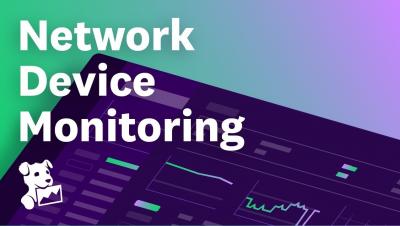Operations | Monitoring | ITSM | DevOps | Cloud
Networks
The latest News and Information on IT Networks and related technologies.
The Reality of Machine Learning in Network Observability
For the last few years, the entire networking industry has focused on analytics and mining more and more information out of the network. This makes sense because of all the changes in networking over the last decade. Changes like network overlays, public cloud, applications delivered as a service, and containers mean we need to pay attention to much more diverse information out there.
Encouraging Employee Movement and Growth Benefits Everyone
From hybrid work opportunities to celebrating milestones, we share best practices from our experience.
Network Security for Banks-Preventing Breaches, Protecting Data
It is no surprise that cybercriminals are after the money, and banks have plenty lying around. They also have gobs of data, making banks irresistible to hackers who have a field day attacking complex banking IT systems flush with more connections than a movie agent. Here are a few recent facts to know.
How to Mitigate Network Risks to Achieve Highly Resilient Business Services
They say change is good. But in IT operations, change is also the number one cause of outages. According to the Uptime Institute, 49% of all service outages are attributed to configuration and change management errors. That's a lot of avoidable headaches. And because errors often have downstream effects, it may not be obvious what caused an outage, resulting in prolonged downtime that affects revenue-generating business services, results in service level agreement (SLA) penalties, and causes a loss of customer trust. And those costs add up quickly. Gartner figures the meter for an average downtime event runs at $5,600 per minute.
What's Using Your Bandwidth? Here's a Monitoring Tool
Bandwidth monitoring provides IT administrators with the assurance that the network has sufficient capacity to run business-critical applications. In addition, network ops team have end-to-end visibility to identify network hogs that cause the congestion. Typically, when a single component overloads in any network, it can bring the entire operation to its knees and impact the employee digital experience. For example, even if you may have a dedicated service plan from your ISP, employees will end up complaining about issues like large file transfer time and slower applications.
Business Benefits of Network Detection and Response (NDR)
When we talk about the business value of a tool or a system that at first glance may seem like a “nice to have” or a “helpful but not absolutely necessary” technology, it is a good idea to start any discussion on the merits of the tool by putting some things into perspective.











